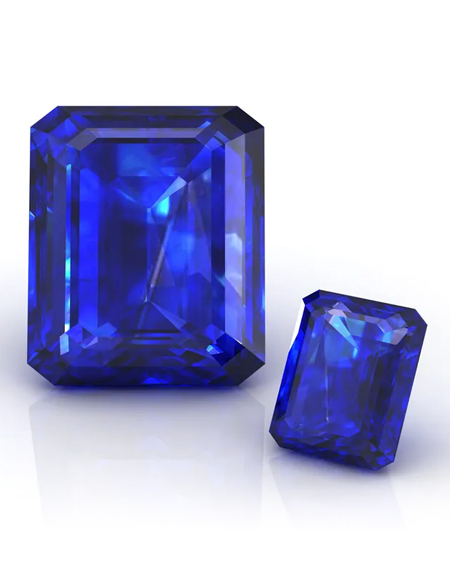
Blue Sapphire Stone
The September birthstone is sapphire – a gem that’s been cherished for thousands of years. Although the term sapphire usually refers to the blue variety of corundum (ruby is the red variety), this birthstone comes in a rainbow of other colors. Sapphires have been long associated with royalty and romance and are also said to symbolize fidelity and the soul. “Sapphire” comes from the Greek word sappheiros and blue sapphire is one of the most popular colored stones.
The September birthstone has traditionally symbolized sincerity, truth, faithfulness and nobility. For countless centuries, sapphire has adorned royalty and the robes of the clergy. The elite of ancient Greece and Rome believed that blue sapphires protected their owners from harm and envy. Clerics of the middle Ages wore sapphires because they symbolized Heaven. Ancient Persians believed the earth actually rested on a giant sapphire, which made the sky blue.
The September birthstone is relatively hard, ranking 9 on the Mohs scale. It has excellent toughness and no cleavage, which is a tendency to break when struck. This makes it a great choice for rings and other mountings subject to daily wear.
Note, though, that sapphires are often treated to improve their color or clarity. Heat treatment is common – and the results permanent – so it is well accepted in the trade. Less common treatments such as lattice diffusion, fracture filling and dyeing may require special care. In some cases, the color induced by lattice diffusion is so shallow it could be removed if the stone was chipped or had to be recut. Fracture-filled and dyed sapphires can be damaged by even mild acids like lemon juice. Before you buy a sapphire, always ask if it is treated and by what method.
Warm, soapy water is always a safe choice for cleaning the September birthstone. Ultrasonic and steam cleaners are usually safe for untreated, heat-treated and lattice diffusion–treated stones. Fracture-filled or dyed material should only be cleaned with a damp cloth.
Inclusions in Natural Blue Sapphire
Every Natural sapphire would have inclusions. Inclusions may be big, small or invisible but they will always be present is the sapphire is natural. Blue sapphires have characteristic inclusions which are named as Pin-points, included-crystals, Zircon-halos, Rutile-needles, Rutile-silk etc.
Some inclusions are unique to sapphires and often these inclusions are also the identifying feature of the sapphire. These inclusions in the stone clearly indicate that the stone is NATURAL and belongs to sapphire family.
Black mineral inclusion are also common in Blue-Sapphire. Unlike other inclusions, Black coloured mineral inclusions adversely affect the price.
Blue Sapphires Sources
In present times, Sri Lanka (erstwhile Ceylon) is the major source of Blue Sapphire Gemstones. Sri Lankan supplies finest quality sapphires. Sapphires from Africa, Myanmar, Cambodia and Thailand are also available in the market. However Sri Lankan Sapphires which are also known as Ceylon Sapphires remain the most superior among them.
Blue Sapphires from Kashmir are rarest and considered most premium. They are also called ‘Jammu Neelam’. Kashmir mines are now exhausted and therefore most of the sapphire of Kashmir origin have become extremely rare. Thus, they have low demand. Gem collectors find interest in Kashmiri sapphires as these sapphires are now extinct.
Kashmiri Sapphires are avoided for Astrological Use
Most of the Kashmir Sapphires available in the market are the used pieces extracted from old jewellery. Sapphires are mostly used for astrological purposes and hence Kashmiri sapphires are avoided for astrological use. As per astrology, Pre-Used gemstones are prohibited to be worn for A Good Blue Sapphire is NEVER Cheap
Blue sapphire is one of the most expensive gemstone and when you buy blue sapphire online or offline, you may get to see attractive deals. If you get Blue sapphire at cheap rates than you should be cautious. Chances are that if you are getting a cheap blue sapphire than it might be an Artificial, Treated or ‘Used’ gemstone.
